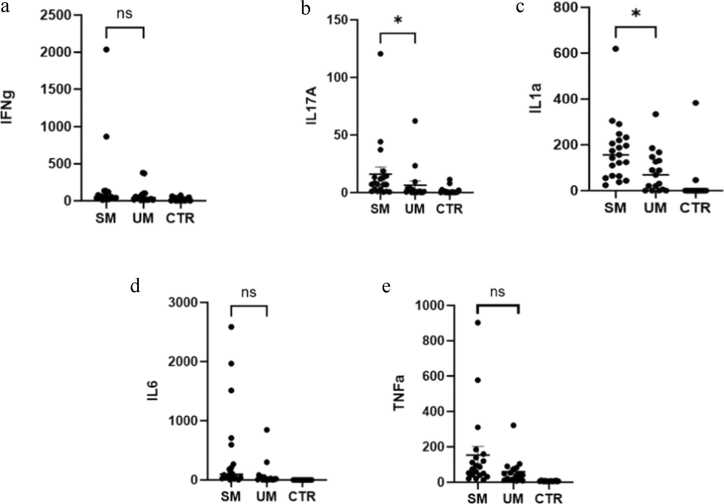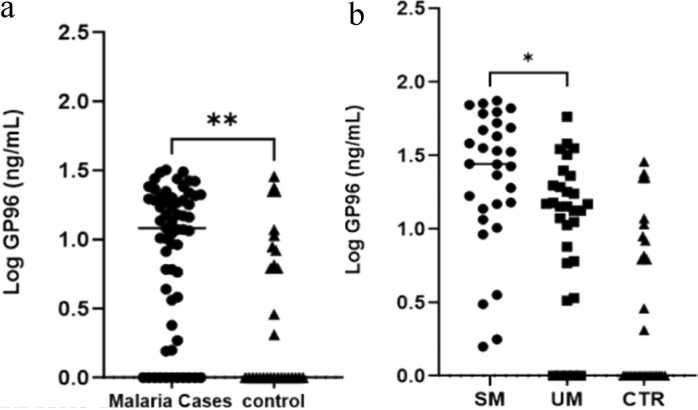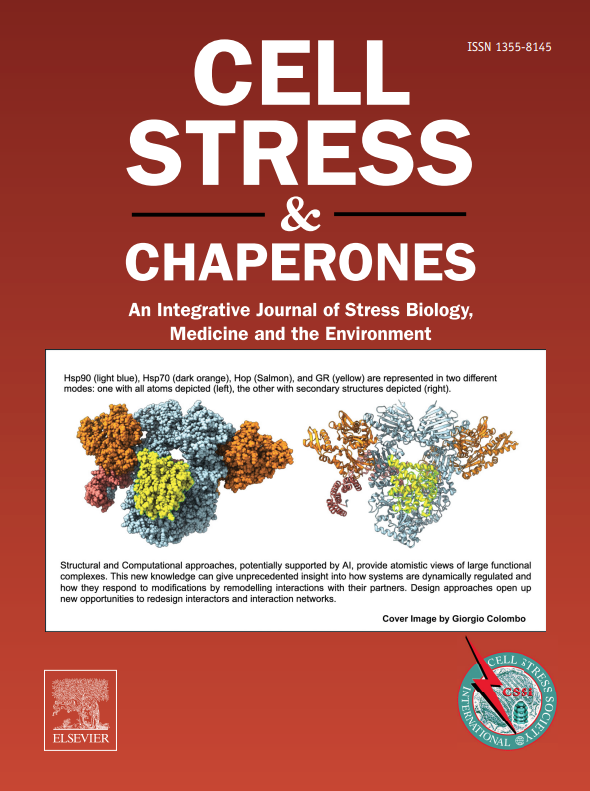Secreted extracellular heat shock protein gp96 and inflammatory cytokines are markers of severe malaria outcome
IF 3.2
3区 生物学
Q3 CELL BIOLOGY
引用次数: 0
Abstract
Malaria caused by Plasmodium spp., is a major public health issue in sub-Saharan Africa. The fight against malaria has stalled due to increasing resistance to treatments and insecticides. There is an urgent need to focus on new therapeutic targets to combat malaria effectively. This study aimed to measure the secreted heat shock protein gp96 levels in both malaria patients and controls. Indeed, gp96 plays a crucial role in parasite survival within the host and in establishing a successful infection. Therefore, gp96 could be a promising target for antimalarial drugs. In our study, we included 60 malaria patients, 30 with severe malaria (SM) and 30 with uncomplicated malaria (UM). Additionally, 28 controls were included. Using the ELISA method, we measured gp96 levels in the participants' blood samples. We then used the Mann–Whitney or analyse of variance tests to calculate descriptive statistics and determined the correlation between gp96 level and parasitemia using Spearman's rank correlation test. The study found that gp96 levels in the plasma significantly increased in malaria patients (23.86 ng/mL) compared to control (5.88 ng/mL), with a P < 0.0001. Interestingly, there was a significant difference between SM (27.56 ng/mL) and UM (13.9 ng/mL), with a P-value of 0.001. These findings are accompanied by significantly higher parasitemia and elevated proinflammatory cytokines such as IL-17A and IL-1β levels in SM patients compared to UM and controls. Furthermore, there was no significant positive correlation between gp96 levels and parasitemia/proinflammatory cytokines. Our research has revealed, for the first time, that individuals with SM have significantly higher levels of gp96 in the context of high parasitemia and proinflammatory cytokines. Our preliminary results will be taken further to evaluate gp96 as a valuable biomarker for the diagnosis of SM and a potential target for antimalarial drug discovery.


分泌的细胞外热休克蛋白gp96和炎症细胞因子是严重疟疾结局的标志。
由疟原虫引起的疟疾是撒哈拉以南非洲的一个主要公共卫生问题。由于对治疗和杀虫剂的耐药性日益增强,防治疟疾的斗争陷入停滞。迫切需要关注新的治疗靶点,以有效地防治疟疾。本研究旨在测量疟疾患者和对照组中分泌的热休克蛋白gp96水平。事实上,gp96在寄生虫在宿主内的生存和成功感染中起着至关重要的作用。因此,gp96可能是抗疟疾药物的一个有希望的靶点。在我们的研究中,我们纳入了60例疟疾患者,其中30例为重度疟疾(SM), 30例为非复杂性疟疾(UM)。此外,还纳入了28例对照(CTR)。采用ELISA法测定了受试者血样中的gp96水平。然后,我们使用Mann-Whitney检验或ANOVA检验计算描述性统计量,并使用Spearman秩相关检验确定gp96水平与寄生虫病之间的相关性。研究发现,与对照组(5.88ng/mL)相比,疟疾患者血浆中gp96水平(23.86ng/mL)显著升高,p < 0.0001。有趣的是,SM (27.56ng/mL)和UM (13.9ng/mL)之间存在显著差异,p值为0.001。与UM和对照组相比,这些发现伴随着SM患者明显更高的寄生虫血症和升高的促炎细胞因子如IL-17A和IL-1β水平。此外,gp96水平与寄生虫血症/促炎细胞因子之间无显著正相关。我们的研究首次揭示,在高寄生虫血症和促炎细胞因子的背景下,严重疟疾患者的gp96水平明显较高。我们的初步结果将进一步评估gp96作为诊断严重疟疾的有价值的生物标志物和抗疟疾药物发现的潜在靶点。
本文章由计算机程序翻译,如有差异,请以英文原文为准。
求助全文
约1分钟内获得全文
求助全文
来源期刊

Cell Stress & Chaperones
生物-细胞生物学
CiteScore
7.60
自引率
2.60%
发文量
59
审稿时长
6-12 weeks
期刊介绍:
Cell Stress and Chaperones is an integrative journal that bridges the gap between laboratory model systems and natural populations. The journal captures the eclectic spirit of the cellular stress response field in a single, concentrated source of current information. Major emphasis is placed on the effects of climate change on individual species in the natural environment and their capacity to adapt. This emphasis expands our focus on stress biology and medicine by linking climate change effects to research on cellular stress responses of animals, micro-organisms and plants.
 求助内容:
求助内容: 应助结果提醒方式:
应助结果提醒方式:


